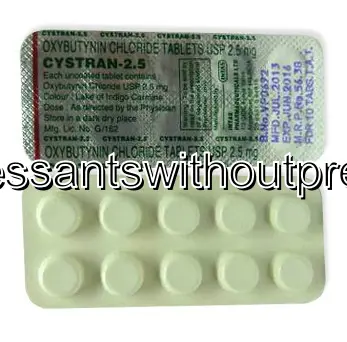| Package | Dosage | Price | Price per Dose | |
|---|---|---|---|---|
| Dosage: 2,5mg | ||||
| 240 pill | 2,5mg | €230.08 | €0.96 | |
| 120 pill | 2,5mg | €116.40 | €0.97 | |
| 90 pill | 2,5mg | €93.12 | €1.03 | |
| 60 pill | 2,5mg | €64.36 | €1.07 | |
| 30 pill | 2,5mg | €34.23 | €1.15 | |
| Dosage: 5mg | ||||
| 360 pill | 5mg | €610.82 | €1.70 | |
| 240 pill | 5mg | €413.60 | €1.73 | |
| 180 pill | 5mg | €317.73 | €1.77 | |
| 120 pill | 5mg | €216.38 | €1.81 | |
| 90 pill | 5mg | €169.81 | €1.89 | |
| 60 pill | 5mg | €119.14 | €1.99 | |
| 30 pill | 5mg | €64.36 | €2.12 | |
| 20 pill | 5mg | €45.18 | €2.27 | |
| 10 pill | 5mg | €24.64 | €2.44 | |

Oxybutynin Description
Overview of Oxybutynin
Oxybutynin is a medication primarily used to treat overactive bladder symptoms, including frequent urination, urgency, and incontinence. It belongs to a class of drugs known as anticholinergics or antimuscarinics, which work by relaxing the bladder muscles. This relaxation helps to increase bladder capacity and reduce the urgency and frequency of urination. Oxybutynin has been used widely for many years and is available in various formulations, including tablets, patches, and syrup, making it adaptable to different patient needs.
How Oxybutynin Works
The medication blocks certain nerve signals in the bladder that cause muscle contractions. By inhibiting these signals, Oxybutynin effectively decreases involuntary bladder contractions. This results in improved control over urinary urges and a significant reduction in urinary incontinence episodes. The targeted action of the drug helps improve quality of life for many patients suffering from overactive bladder and related disorders. Proper use and dosage are essential to maximize benefits and minimize potential side effects.
Advantages of Oxybutynin
Many patients report a noticeable improvement in their bladder control after starting Oxybutynin. The medication can significantly decrease the frequency of urgent bathroom visits and incontinence episodes. Its availability in different forms allows for flexible administration, which can enhance compliance. The oral tablet is convenient for most users, while the transdermal patch may reduce some common side effects, such as dry mouth and constipation. Overall, Oxybutynin is considered a reliable and effective option for managing overactive bladder symptoms.
Possible Side Effects and Precautions
Like any medication, Oxybutynin may cause side effects. The most common include dry mouth, dizziness, blurred vision, and constipation. Some users may experience nausea or urinary retention, especially at higher doses. Due to its anticholinergic properties, it can also cause cognitive impairment in elderly patients or those with certain neurological conditions. It is important to inform your healthcare provider about any existing health issues and current medications before starting treatment. Regular monitoring can help manage adverse effects effectively.
Patient Considerations and Usage Tips
Patients should follow their healthcare provider’s instructions carefully when using Oxybutynin. Taking the medication with food can help reduce gastrointestinal discomfort. If using the patch, it should be changed as directed, usually once a day, and skin should be prepared properly to prevent irritation. Be aware of potential side effects and report any severe or persistent symptoms to your doctor. Maintaining adequate hydration and a balanced diet can help counteract some common side effects such as dry mouth and constipation. Finally, do not stop taking the medication abruptly without medical advice, as this can lead to a return of symptoms.
Conclusion
Oxybutynin remains a valuable option for those seeking relief from overactive bladder symptoms. Its effectiveness, combined with multiple administration routes, provides flexible treatment options. Nonetheless, it is essential to be aware of possible side effects and to consult with a healthcare professional for personalized guidance. Proper management and adherence to prescribed doses can greatly improve patient comfort and quality of life.

